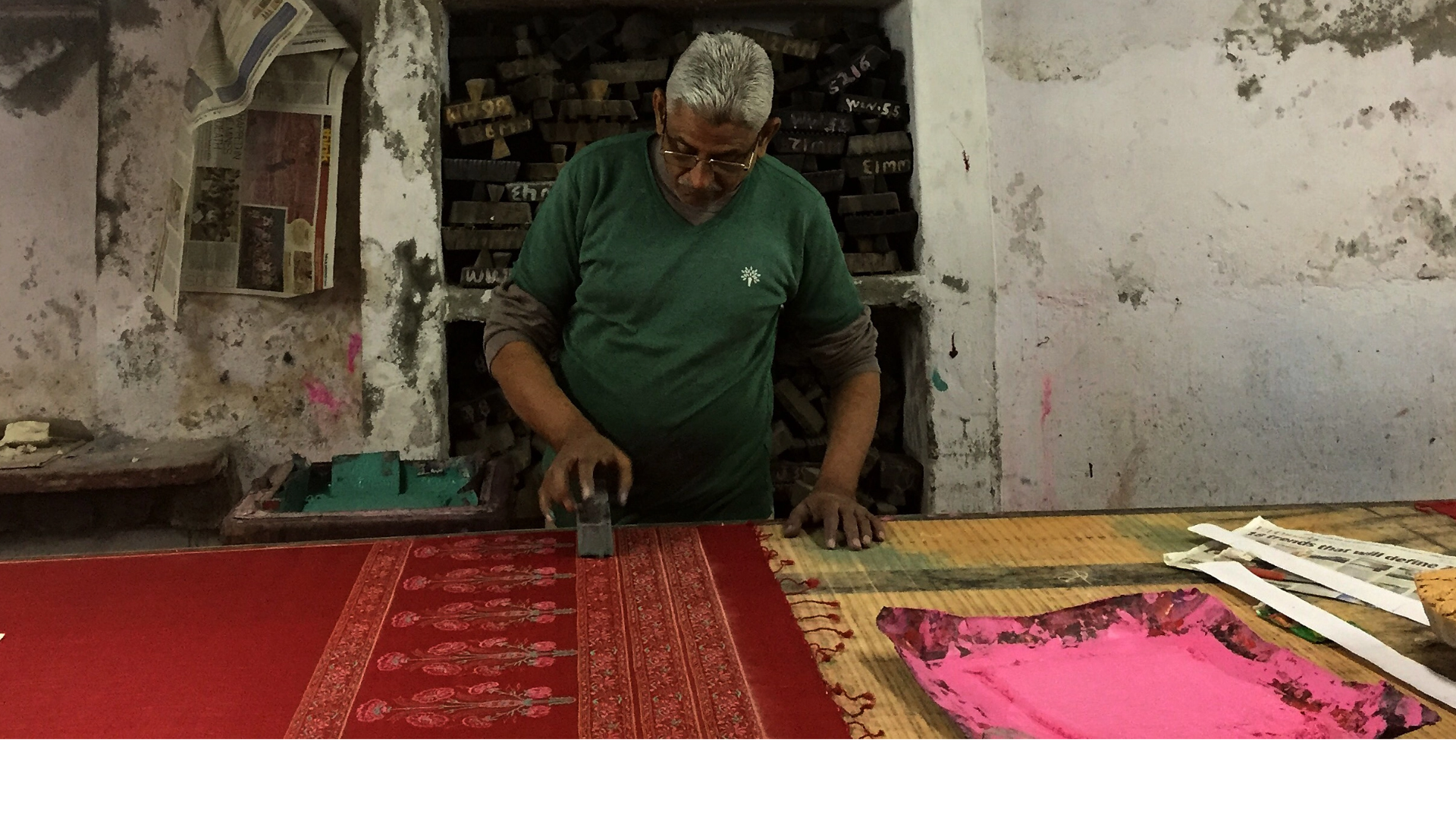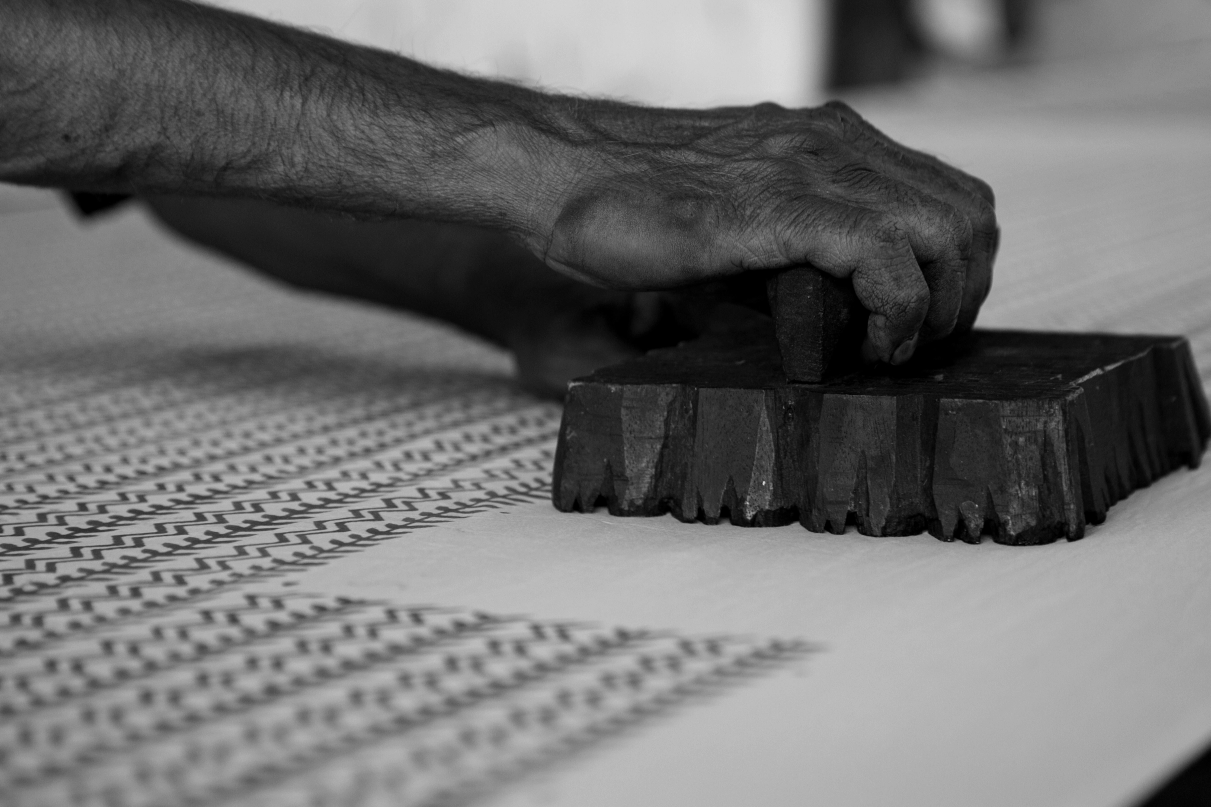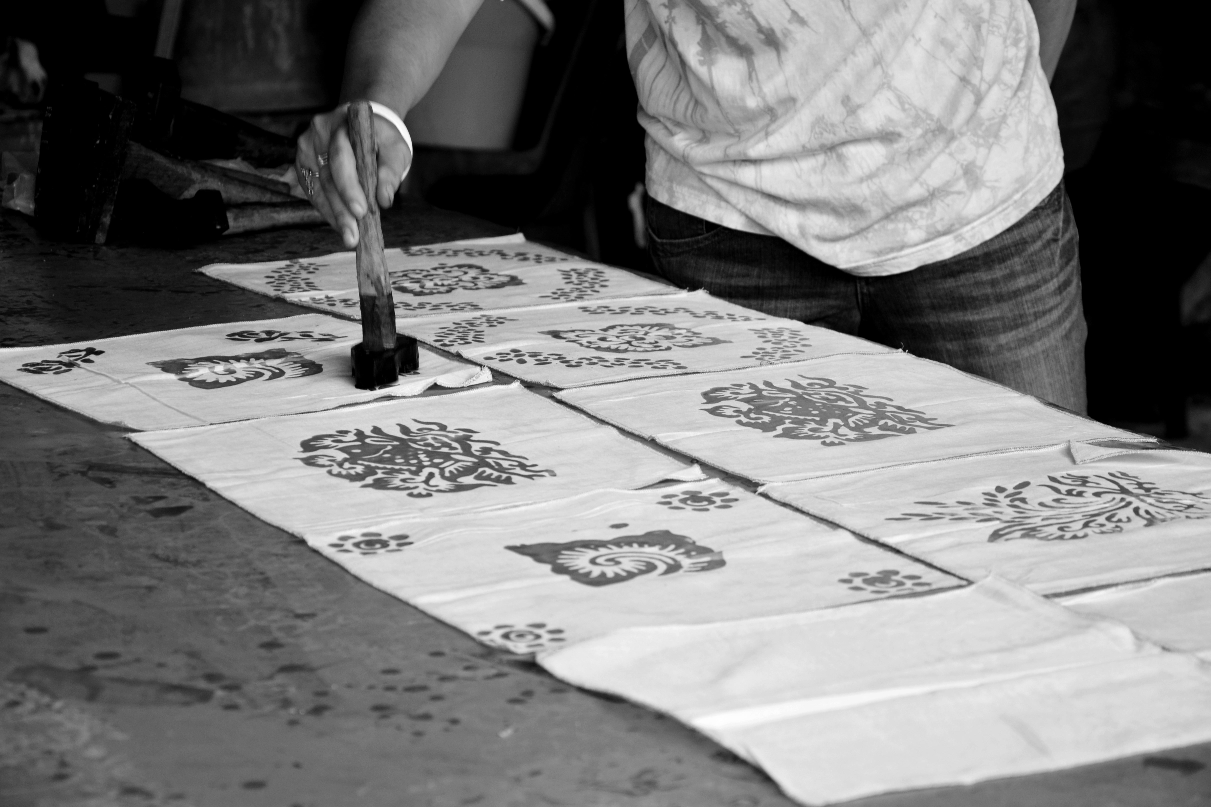
The Rhythm of Blocks: Stories Imprinted by Hand
The Quiet Rhythm of Blocks
Every silhouette in Soul of a Woman tells a story—of the artisan who wove its threads, of the land that nurtured its fibres, of the centuries-old traditions that shaped its beauty. But most of all, it tells your story when you wear it: your strength, your softness, your journey.
Rajasthan: Sanganer and Bagru
In Rajasthan, where the desert sun sharpens every shadow and hue, the towns of Sanganer and Bagru breathe color onto fabric with a kind of sacred precision. I still remember the first time I walked through a Bagru workshop. The air was thick with the scent of natural dyes—indigo, madder, turmeric—and the floors were a mosaic of drying fabric. Artisans moved like dancers, stamping floral motifs with engraved teakwood blocks that had been passed down for generations. The resist dyeing process here—where mud, gum, and sawdust are used to print patterns before dyeing—is nothing short of alchemy. The cloth emerges from the vat, transformed, holding within it the memory of water, earth, and hand.
Sanganer, with its intricate fine-line floral motifs and lighter, pastel palette, has always struck a different note. There’s a grace to Sanganeri printing, a lyrical quality that lends itself beautifully to delicate silhouettes. Over the years, I have often drawn from this craft for pieces where restraint and refinement are key—drapes that whisper, not shout. Each tiny buta seems to carry its own breath.

Ajrakh: Geometry and Devotion
Gujarat offers a completely different narrative—one rooted in bold geometry, saturated color, and complex layering. Ajrakh, in particular, is a textile I hold close. Crafted traditionally by the Khatri community in Kutch, Ajrakh isn’t printed—it is composed. The process can involve more than a dozen steps: printing with resist paste, dyeing with natural indigo or alizarin, drying, washing, and starting again. It’s a conversation between pattern and pigment that spans nearly three weeks. I remember once watching an artisan gently align his hand-cut block to match a motif just millimeters apart from the last—there was reverence in that act, and I’ve carried that feeling into my own work ever since.
Kalamkari: Cloth as Canvas
Kalamkari in Andhra Pradesh took me by surprise with its narrative intensity. Unlike the symmetrical beauty of block prints, Kalamkari tells stories—mythological epics painted and printed by hand with a bamboo kalam. I once worked on a capsule collection inspired by temple friezes, and collaborating with Kalamkari artists felt like stepping into a parallel world where cloth becomes canvas, and every inch is alive with meaning. The natural dyes used in this process, fermented in cow’s milk and herbs, bring a luminosity that feels organic and rooted.

Bagh and Beyond
In Madhya Pradesh, Bagh printing has quietly become one of my personal favorites. The red and black motifs, derived from nature and geometry, hold a timeless appeal. There’s a kind of meditative repetition in Bagh that lends itself to contemporary design. I’ve often adapted Bagh for more minimal, architectural pieces, where structure and surface are in dialogue. And then there’s Punjab’s lesser-known Naqashi work, Bengal’s screen-printed batik experiments, and even the bold brushstrokes of hand-painted textiles from Odisha. Each region brings its own rhythm and vocabulary. Over time, these have not just entered my collections—they’ve entered my way of seeing.
Designing with Spirit
As a designer, I’ve never been interested in mere replication. My job has been to absorb the spirit of these crafts, and then translate it through my lens—sometimes preserving the original form, sometimes reimagining it, but always with deep respect for its roots. Each time I create a print story, it begins with conversations—with craftsmen, with archives, with pigments and paper. It begins on the ground, with people and process, long before it ever touches the runway.
In a world veering dangerously close to the synthetic and the instant, I have found anchoring truth in these ancient techniques. They remind me that slowness has value, that beauty can be deliberate, and that the most powerful stories are those told by hand.
Your Journey with Us Begins Here

